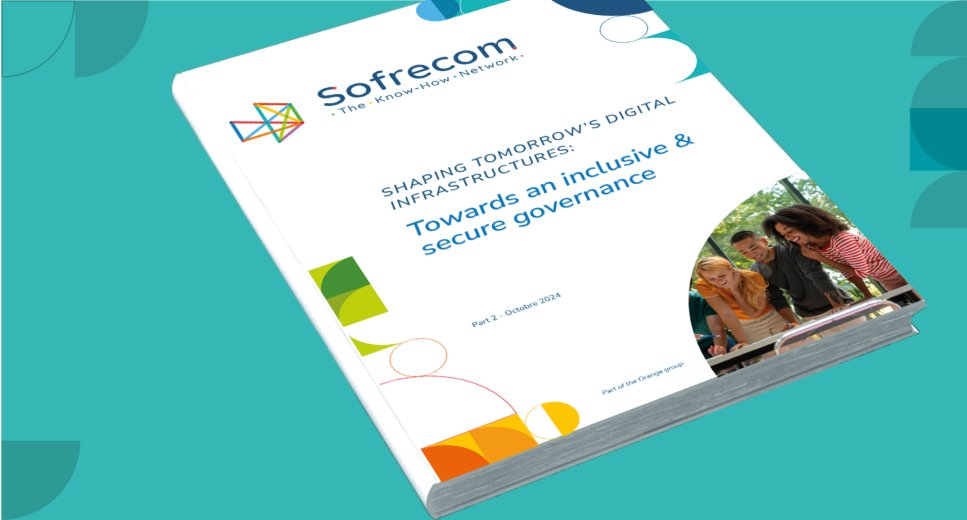Given the low level of banking access among populations in low- and middle-income countries, digital payment services, such as mobile money, provide an opportunity for efficient digitization of government payments.

In emerging countries, the digitization of financial transactions between governments and their citizens is often a cornerstone of public service dematerialization and the digital transformation of states. It addresses issues related to cash payments and can sometimes directly facilitate access to public services. While it offers numerous benefits, its success relies heavily on key factors for effective implementation.
Cash transactions: costs, risks, and challenges
In emerging countries, the collection of taxes, fees, and stamp duties by government agencies and public entities, as well as the distribution of benefits such as allowances, pensions, subsidies, and scholarships to citizens, often relies on cash transactions. These cash-based transactions present several disadvantages for both public authorities and citizens:
- Establishing and managing payment counters incurs significant costs including personnel expenses for customer service, cash handling, and accounting oversight; administrative costs for documenting payments; and operational costs for running the counters. Additionally, cash operations are prone to risks such as errors, lack of traceability, difficulties in tracking inflows and outflows, and security concerns.
- The challenges faced can hinder access to public services. In remote areas, citizens may need to undertake long and potentially costly journeys to make payments. Moreover, carrying large amounts of cash exposes them to security risks, while the lack of traceability of cash payments can impact customers’ satisfaction and trust in public services.
Digitizing payments and mobile money to accelerate the digital transformation of governments
To address these challenges effectively, governments are increasingly investing in the digitization of public services. Here are two notable examples:
- By 2023, Rwanda had digitized over 100 administrative procedures (such as civil registration, land registration, and fine payments) through the IremboGov platform, which integrates various digital payment tools. At that time, the platform had processed more than 25 million requests and collected over USD 250 million in payments. Rwanda aims to digitize an additional 400 administrative procedures to further streamline public services and enhance efficiency.
- Senegal: The digitization of payments and enrollment in the Universal Health Coverage program has significantly expanded access to healthcare. It has also enabled beneficiaries' relatives abroad to pay contributions from overseas, thereby improving access to essential health services and increasing inclusivity.
In countries with low levels of banking penetration, particularly those with low and middle incomes, digital payment services, such as mobile money, present a valuable opportunity for effective digitization of government payments. Many governments are leveraging this technology, which has been widely adopted and used in numerous countries, to digitize administrative payments. Thus, the citizens of Ivory Coast can pay school fees, fines, tolls, and energy bills via mobile money, which simplifies the payment process and increases convenience. In Egypt, the digital payment service, Fawry, allows users to settle tuition fees, driving license fees, fines, water and electricity bills, and even purchase public transport tickets. This service has greatly facilitated access to various public services, making them more accessible and efficient.
In 2022, the GSMA reported an impressive 1.2 billion mobile money accounts worldwide, with 500 million of these being actively used within a 90-day period.
Reliability, efficiency, and frugality of Digital Payments
The digitization of public payments offers numerous operational benefits for both citizens and public entities:
- Digital payments accelerate and secure payment flows by eliminating the need for the transport, storage, and handling of cash.
- Digital payments provide better traceability through the digitization and archiving of payment information and payer identities. This enhanced traceability increases transparency in public financial management.
- By minimizing the handling of cash, digital payments lower operational costs associated with cash management.
- Digital payments offer convenience by allowing citizens to make payments remotely. This not only saves time but also reduces the need for physical trips to payment centers, benefiting both individuals and businesses.
Overall, the adoption of digital payments leads to increased operational efficiency for governments and public institutions. It reduces costs, boosts revenue, enhances the quality of public services, and modernizes the image of public administrations. For citizens, it provides an improved user experience, fostering greater trust and satisfaction with public services.
Key success factors
To successfully digitize their financial transactions, governments need to address three main challenges:
1. Providing a wide range of payment options and ensuring interoperability
Citizens should be able to use their preferred digital payment instruments. This requires governments to offer a broad spectrum of payment options. Achieving this necessitates the use of interoperability or payment aggregation platforms. These platforms facilitate the collection and disbursement of funds from, or to, multiple payment services through a single interface, eliminating the need for bilateral agreements with each payment service provider.
2. Offering simple and attractive payment processes for users
To deliver tangible benefits to citizens, digital payment processes must be simple, secure, and as brief as possible. As payment systems become inherently complex due to the diversity of payment solutions and administrative information systems, it is crucial to absorb this complexity, so that it does not affect the user experience. Sofrecom's involvement in public payment digitization projects has identified several key success factors for designing an optimal user experience. These include :
- A seamless sequence of payment steps.
- Easy-to-navigate interfaces with clear readability.
- Concise and understandable instructions for making payments.
- Utilizing user-centric approaches and iterative methodologies (such as low-fidelity mockups, prototyping, and user testing) helps develop optimal payment processes.
3. Digital identification, a fundamental enabler
The concept of online identification and authentication of citizens is central to the digitization of payments. Governments must be able to verify, either beforehand or during the transaction, that benefits are disbursed to the correct beneficiaries and that taxpayers have indeed paid their taxes.
To achieve this, governments are relying on a national digital identity database, also known as foundational identity, which many states are implementing through programs such as WURI (West Africa Unique Identification for Regional Integration and Inclusion). In the absence of such a system, governments could consider creating ad hoc digital databases for specific public services or projects.
Regardless of the approach, it is imperative to ensure that personal data protection is upheld as it safeguards payment transaction data. Therefore, while the digitization of public payments offers numerous benefits, it is essential for public entities to standardize a structured approach that addresses the key challenges of such projects to maximize the anticipated benefits.





